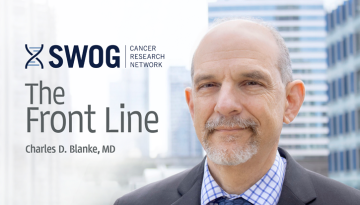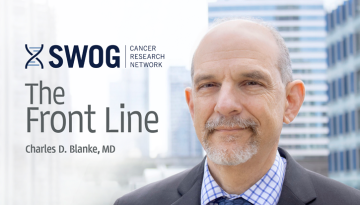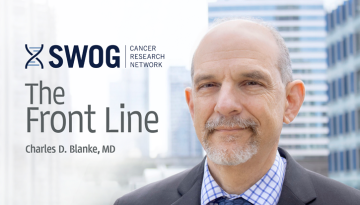Sex-Based Differences: Severe Adverse Events
Sex-based differences in cancer incidence and mortality are plentiful, varying by cancer. Differences in how women and men are treated for cancer and how they benefit – or fail to benefit – from those treatments have also been well documented. The question of how toxicities brought on by those treatments vary by sex, however, has gotten less attention.
The oncology community has long known that women are at higher risk than men of suffering severe adverse events (SAEs) from chemotherapy. But as treatment paradigms have shifted beyond cytotoxic therapy, it has not been clear whether women are at higher risk from other treatment modalities as well, such as targeted- or immunotherapies.
Now, thanks to work led by SWOG’s own Dr. Joseph Unger, we know at least some of these answers. After analyzing decades of SWOG data, Dr. Unger has concluded targeted- and immunotherapies (particularly the latter) both also carry higher risks of SAEs for women than for men.
Compared to men, women had a 34 percent greater risk of experiencing an SAE in response to cancer treatment. This increased risk was seen in all three treatment domains but was highest for immunotherapy (49 percent greater!).
For this analysis, which is published in the Journal of Clinical Oncology, Unger’s team reviewed SWOG phase II and III treatment trial data gathered from 1989 through 2019 (the cut-off date was just before the arrival of COVID-19, to ensure the data were not skewed by factors related to the pandemic). They examined only those trial arms on which patients received systemic treatment, and they assessed AEs only for the initial on-protocol therapy. Additionally, sex-specific cancers such as prostate cancer and sex-dominant cancers such as breast cancer were excluded from the analysis, as were sex-specific AEs.
In the end, the team analyzed data from more than 23,000 patients who had participated in 202 SWOG trials and who had together experienced a total of almost 275,000 of the types of AEs assessed. Almost two-thirds (64.6 percent) of these patients experienced at least one severe (grade 3 or higher) AE.
Unger’s team looked at data on both symptomatic AEs (13 categories) and objectively measured AEs (14 categories), further categorizing the objective AEs into hematologic and nonhematologic subcategories. They found that women who received immunotherapy were at a 66 percent higher risk of symptomatic AEs than men.
Women also had a higher risk of severe symptomatic AEs and severe objective hematologic AEs. Finally, women faced a significantly greater risk than men of experiencing five or more severe AEs.
The question of why women tend to experience greater toxicity from cancer treatments is important but remains open. Perhaps women get a greater dose relative to body size than men do. Perhaps women and men perceive and report symptoms differently. Perhaps it’s sex-based differences in pharmacokinetics, pharmacodynamics, and/or pharmacogenetics. What does seem clear from these results, though, is that true precision cancer medicine also needs to incorporate what we know about sex-specific toxicity risks.
With its repository of clinical data on more than 200,000 trial participants from more than 1,300 trials conducted over more than 60 years, SWOG is ideally positioned to tackle and convincingly answer these kinds of big-data questions.
We’ve done it time and time again in recent years – numerous times, in fact, over just the past year:
- an analysis of the association between patients’ baseline level of fatigue and their overall survivaltimes
- an analysis of the association between health-related quality of life and progression-free survival in patients with advanced cancer
- an analysis showing that even with the consistently high-quality care found in clinical trials, the poorest patients still live the shortest lives after treatment
- an analysis showing 25 years of SWOG trials have included robust representation of adolescent and young adult patients with cancer
- an analysis of the tremendous collective impact of NCTN trials on the lives of cancer patients(okay, this last one went beyond the SWOG database and included the databases of our sister groups as well).
To help ensure these valuable data resources continue to be plumbed for the insights they hold, The Hope Foundation offers a targeted funding opportunity that supports secondary analyses. Any SWOG member with a well-defined and salient question and a first-rate statistical plan can apply. We’ve learned a ton from Dr. Unger. What will we learn from your work?
Other Recent Stories



